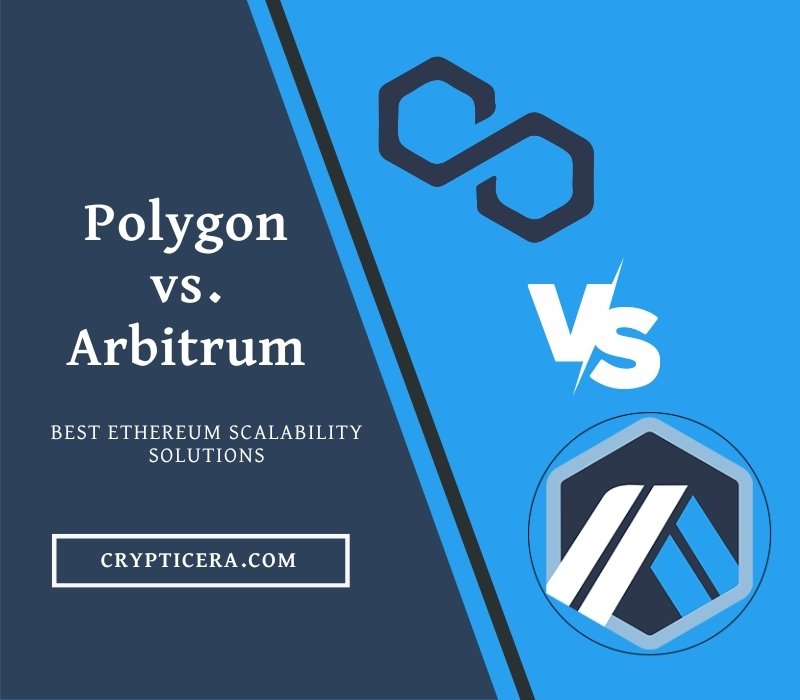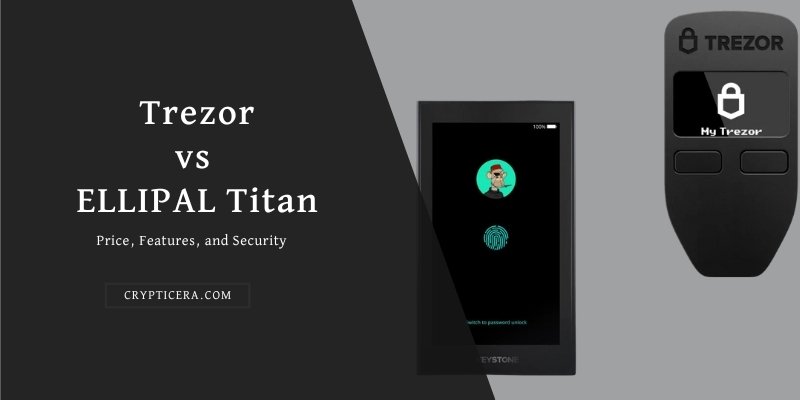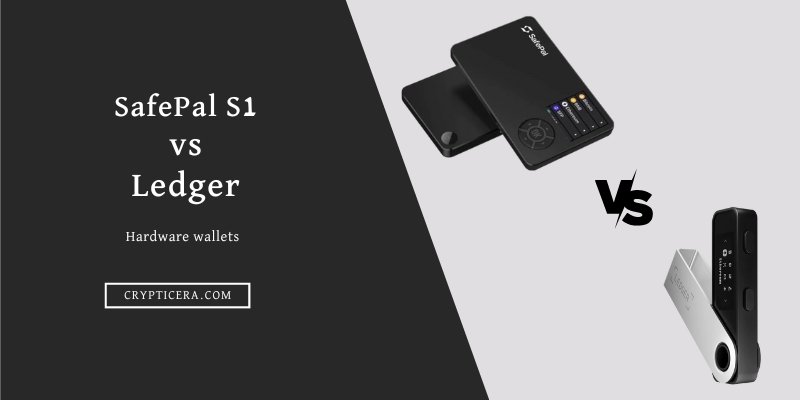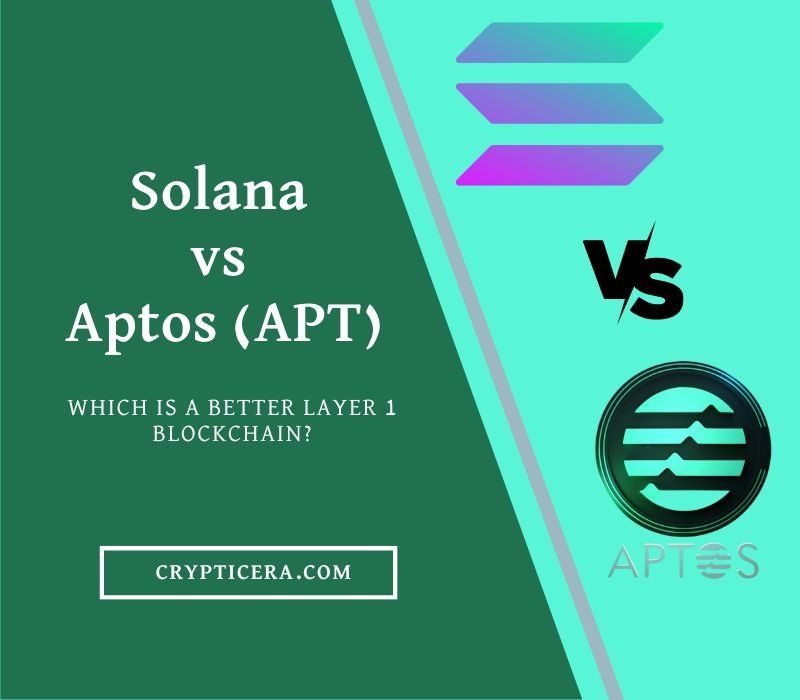Imagine a world where your blockchain transactions are lightning-fast and cost next to nothing.
Sounds like a dream? Well, it’s not anymore with the emergence of Layer-2 solutions like Arbitrum and Polygon (MATIC).
These rising stars are solving the age-old problem of high gas fees and slow transaction times on the Ethereum Network. But what exactly sets these two apart?
In this blog post, we will compare, Arbitrum vs Polygon, based on their working architecture, consensus mechanism, smart contract capabilities, and TPS.
Buckle up, it’s time to explore the next generation of blockchain technology!
Key Differences and Similarities 💡:
- Transaction Speed: Arbitrum is known for its faster transaction processing time compared to Polygon, thanks to its use of Optimistic Rollups.
- Fees: In terms of Gas fees, Arbitrum offers lower fees for transactions and gas costs compared to Polygon, making it a more affordable option for users who want to interact with the Ethereum network.
- Ecosystem: Polygon has a more robust DApps Ecosystem, thanks to its multi-blockchain interoperability, while Arbitrum is still in the process of building out its ecosystem.
Polygon vs Arbitrum: Key Differences
| Arbitrum | Polygon (formerly Matic) | |
|---|---|---|
| Launch date | 2020 | 2017 |
| Founders | J. Benjamin Livshits, Madars Virza | Jaynti Kanani, Sandeep Nailwal |
| Use cases | Scaling for private and permissioned blockchain networks | Scaling for Ethereum and other public blockchain networks |
| Ecosystem Market Cap | 1.08 billion | $1.14 billion |
| Transaction speed | ~40,000 TPS | ~1000 TPS (65k Theoretically) |
| Block time | ~15 sec | ~20 sec |
| Validators | Not Fully Decentralized | Decentralized |
| Smart contract language | Solidity, Vyper, and others | Solidity |
What is Arbitrum?

Arbitrum is a layer 2 scaling solution for the Ethereum blockchain. It uses a technique called “off-chain execution” to allow smart contracts and decentralized applications (dApps) to run faster and more efficiently than they would on the main Ethereum network.
This is achieved by moving some computational work required to execute a contract or dApp off of the Ethereum blockchain and onto a separate, off-chain network.
This reduces the amount of data that needs to be processed by the Ethereum network, allowing for faster transactions and lower gas fees.
Key Features of Arbitrum
- Off-chain execution for faster transactions and lower gas fees
- Optimistic execution for processing multiple transactions simultaneously
- Commitment transactions for updating the state of contracts and dApps on the Ethereum blockchain
- Verifiable computation for ensuring the security and correctness of off-chain execution
- High scalability for supporting more complex and sophisticated dApps
- Low Latency for real-time confirmations
- Interoperability with other Layer 2 solutions.
Pros and Cons of Arbitrum
| Pros | Cons |
|---|---|
| Scalability – handle many transactions per second. | Complexity – The underlying technology is complex. |
| Privacy – uses zero-knowledge proofs | Limited availability – only available on the Ethereum network. |
| Flexibility – support multiple programming languages. | Limited adoption |
| Interoperability – interact with other blockchain networks. |
Related: Arbitrum vs Optimism
What is Polygon (MATIC)?
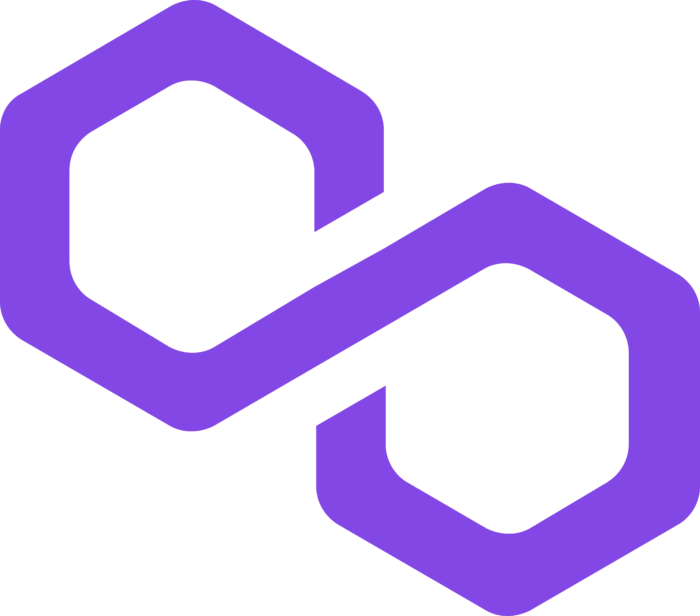
Polygon (formerly known as Matic) is a blockchain platform that aims to provide a scalable and secure infrastructure for decentralized applications (dApps).
It uses a multichain architecture, where a main Ethereum-compatible chain (the “Polygon main chain”) is connected to multiple side chains (referred to as “child chains”).
Each child chain is designed to handle its own set of transactions, allowing for increased throughput and lower transaction fees compared to the main Ethereum blockchain.
It uses a system of sidechains to offload some data processing from the main Ethereum chain, which helps to reduce transaction fees and improve the speed of transactions.
Key Features of Polygon (MATIC)
- Polygon uses multi-chain architecture to increase scalability and throughput
- The consensus mechanism is Proof of Stake (PoS)
- Uses Plasma Framework to connect child chains to mainchain
- Built-in governance system for community-driven development
- Compatible with the Ethereum ecosystem
- Low transaction fees
- Decentralized oracle network for secure data feeds
- Supports various protocols and standards such as ERC-20, ERC-721, and more.
Pros and Cons of Polygon Network
| Pros | Cons |
|---|---|
| High scalability | Limited use cases |
| Low transaction fees | Limited adoption |
| Fast transaction processing | Dependence on the Ethereum network |
| Improved security | Compatibility issues with some wallets |
| Increased privacy |
Arbitrum vs Polygon vs Optimism: The Ultimate Comparison
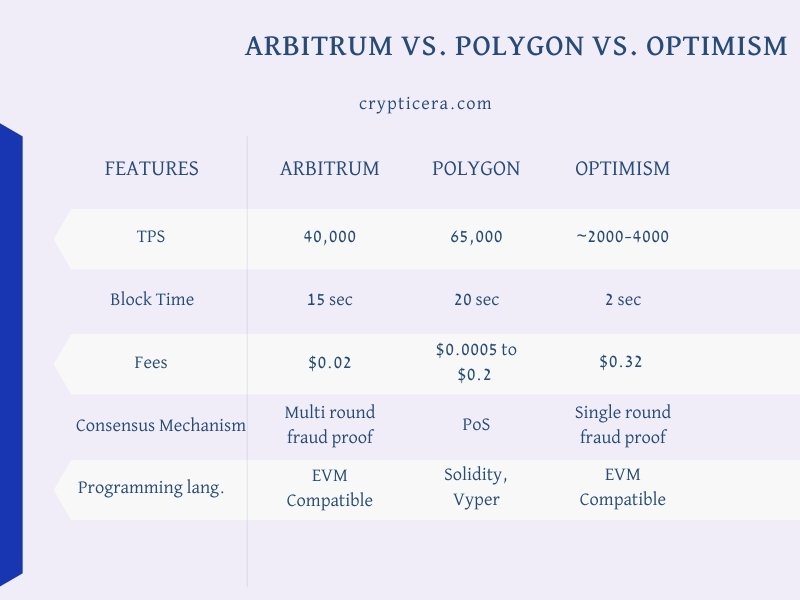
Scalability
Arbitrum, with its unique layer 2 scaling solution, boasts a high level of scalability, allowing for lightning-fast transactions and near-instant confirmation times.
Its innovative approach to scaling “Optimistic Rollups” allows for a virtually limitless number of transactions to be processed, making it a top choice for businesses and projects with high transaction volume.
On the other hand, Polygon, also known as Matic Network, utilizes a more traditional scaling method through its use of side chains.
While this approach does allow for increased scalability, it may not be able to keep up with the sheer volume of transactions that Arbitrum can handle.
However, Polygon’s sidechains are built on a robust infrastructure, making it a more secure option for projects with less demanding scalability needs.
Transaction Speed
Arbitrum is a layer 2 scaling solution that is built on top of Ethereum. It uses a technique called “optimistic rollup” to increase the number of transactions that can be processed per second.
This allows Arbitrum to process transactions at a much faster rate than Ethereum, with speeds of up to 40,000 transactions per second.
Polygon, on the other hand, is a layer 2 scaling solution that is built on top of Ethereum using a technique called “sharding”.
This allows Polygon to process transactions at a speed of up to 65,000 transactions per second.
Smart Contract Language
Arbitrum is an Ethereum layer-2 scaling solution. Therefore, it uses Ethereum virtual machine (EVM) compatible smart contract languages like Solidity, Vyper, and Flint.
Polygon uses a variation of the Solidity programming language, called Matic Contract Language (MCL), for smart contracts.
ARB vs MATIC: DeFi Ecosystem and TVL
TVL stands for Total Value Locked, and it is a metric used to measure the total value of assets locked in a decentralized finance (DeFi) platform. It is often used as a measure of the size and growth of the DeFi ecosystem.
The TVL of a platform is calculated by adding up the value of all assets that are held in smart contracts on that platform, such as crypto-assets, stablecoins, and other digital assets.
The total value Locked in Polygon DeFi is $1.14 billion (as of January 15, 2023).
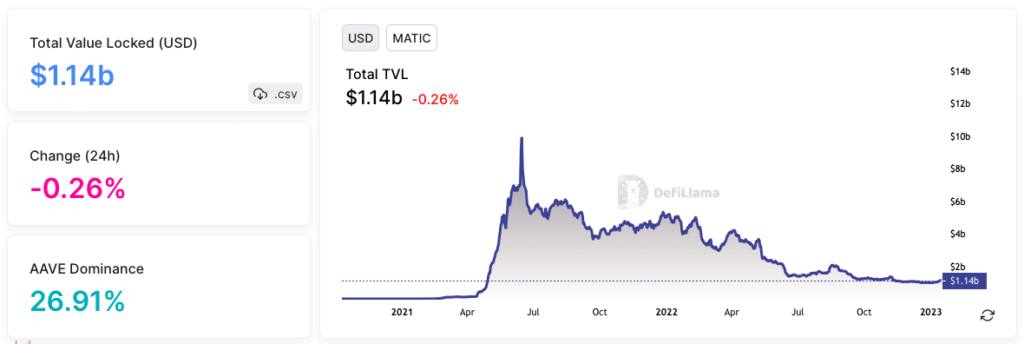
| Defi | Category | TVL |
|---|---|---|
| Aave | Defi lending | $307.58m |
| Quick swap | DEX | $170.33m |
| Balancer | Dexes | $149.53m |
| Uniswap V3 | Dexes | $100.53m |
| Beefy | Yield Aggregator | $69.79m |
| Curve | Dexes | $66.29m |
The total value Locked in Arbitrum Defi is $1.08 billion (as of January 15, 2023).
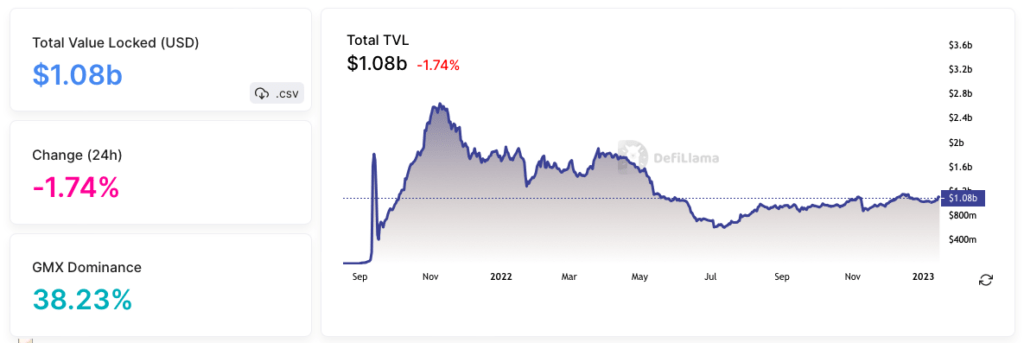
| Defi Protocol | Category | TVL |
|---|---|---|
| GMX | Derivatives | $414.34m |
| Sushi | $85.5m | |
| Uniswap V3 | Dexes | $84.59m |
| Curve | Dexes | $69.13m |
| AAVE V3 | Lending | $56.01m |
| Synapse | Cross Chain | $55.85m |
Network Security
Arbitrum is a layer 2 scaling solution for Ethereum that uses “Rollup” technology to increase transaction throughput and reduce gas costs.
It uses a combination of on-chain and off-chain computation to increase scalability while maintaining the security of the Ethereum mainchain.
Polygon is also a layer 2 scaling solution for Ethereum that uses a system of sidechains to increase transaction throughput and reduce gas costs.
It uses a system of “validators” to secure the network, this makes it a more secure and Decentralized network for Defi platforms.
Can you bridge from arbitrum to Polygon?
Yes, it is possible to bridge from Arbitrum to Polygon using the following steps:
- First, you will need to have a wallet that supports both Arbitrum and Polygon networks. For example, you can use Metamask, a popular wallet that supports both networks.
- Next, you will need to find a bridge that supports the transfer of assets from Arbitrum to Polygon. One such bridge is the Arbitrum ↔ Polygon bridge provided by Synapse protocol
- Go to the Synapse protocol website and connect your wallet that supports both Arbitrum and Polygon.
- Choose the asset that you want to transfer from Arbitrum to Polygon and specify the amount.
- Follow the on-screen instructions to confirm the transaction and complete the transfer.
- Once the transfer is complete, you should be able to see the asset in your wallet on the Polygon network.
What is a Layer-2 Scaling Solution?
Layer-2 scaling solutions are techniques or protocols that are designed to increase the transaction processing capacity and reduce the congestion of a blockchain network by processing transactions off-chain.
These solutions are built on top of the existing blockchain network, hence the term “layer-2”.
There are several different types of layer-2 scaling solutions, including sidechains, state channels, Plasma, and Optimistic Rollups.
Each solution works slightly differently, but they all aim to improve the scalability and efficiency of blockchain networks.
Comparing Layer-2 Scaling Solutions: Sidechains vs Optimistic Rollups
Polygon Sidechains are separate blockchain networks that run parallel to the main blockchain network and are linked to it through two-way pegging.
Transactions are processed off-chain on the sidechain, which can help reduce congestion on the main network.
In Arbitrum Optimistic Rollups, Transactions are first processed on-chain, but with an optimistic assumption that they are valid.
Only if a dispute arises, will the transactions be rolled back and processed again.
In terms of speed, Optimistic Rollups are known to be faster than Sidechains due to their ability to process more transactions per second.
However, Sidechains are more flexible and can support a wider range of use cases compared to Optimistic Rollups.
Final Thoughts: Which is better
So, which is better, Arbitrum or Polygon? Which should you choose better, Arbitrum vs Polygon?
MATIC and Arbitrum are both promising solutions for the scalability issues faced by the Ethereum network. Both projects have a strong team of developers and a growing community of supporters.
Polygon’s sidechain protocol supports Solidity and Vyper. In contrast, Arbitrum’s sidechain infrastructure is based on Optimistic Rollup and supports all EVM programming languages, including Vyper, Solidity, Flint, and Yul+.
In terms of network scale, Polygon currently boasts a higher sidechain count at 65,000, while Arbitrum currently has 40,000.
However, when it comes to market capitalization, the two are quite close, with Polygon valued at $2.46 billion and Arbitrum at $2.48 billion as of writing.
FAQs
Is Polygon Faster than Arbitrum?
Yes, in terms of theoretical transaction speed, Polygon is capable of processing up to 100,000 TPS compared to Arbitrum’s 40,000 TPS.
However, it’s important to note that the practical transaction speed of Polygon is around 1000 TPS, which is still faster than many other blockchain networks, including Ethereum.
